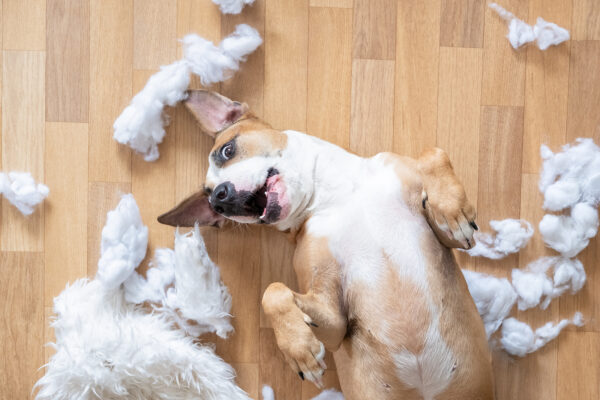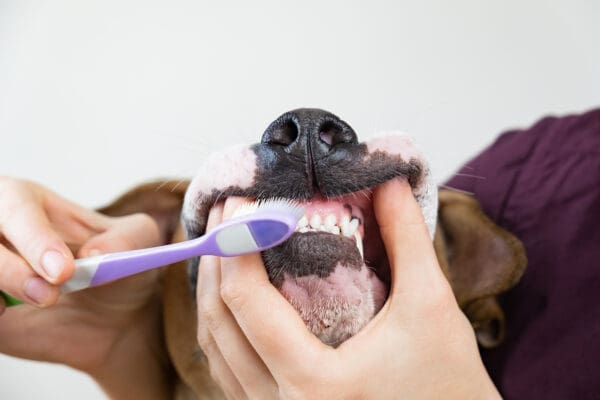
11401 NE 195th St. Bothell, WA 98011
(425) 486-9000 PHONE (425) 486-9002 fax
Using positive reinforcement and practice, you should be able to train your pet to:
- Willingly enter a travel carrier to come to the veterinary clinic
- Willingly step onto a scale to be weighed
- Willingly leave you to step onto the hand of a veterinary staff member (birds) or to allow themselves to be picked up/carried by staff members
- Accept gentle towel restraint without fear
It will take time and dedication on your part to teach your pet these behaviors. However, this training will greatly reduce stress on your pet during veterinary visits, making the experience much more pleasant for both of you. In addition, positive reinforcement training will significantly improve your relationship with your pet! Please refer to our Stress and the Veterinary Visit handout for more information on ways to improve you and your pet’s experiences at our hospital.
Entering the carrier:
If your pet has never seen a carrier before, place the carrier near your pets’ enclosure for several days/weeks, allowing them to adjust to the sight/smell of it. Slowly bring the carrier closer to the enclosure over a period of time, making sure that your pet is not showing any signs of stress associated with the carrier before moving it closer.
Once your pet is used to the sight of the carrier, allow access to the carrier in a controlled environment. Feed your pet treats around the carrier, and place treats inside the carrier for your pet to find. Initially, you should reward your pet for looking at the carrier or moving closer to the carrier. Over time, you can increase the requirements for your pet to receive treats (must be closer to the carrier before receiving a treat; must place one foot at the door of the carrier before receiving a treat; etc.). Target training is a great way to ease your pet into this experience (see our handout on Target Training for more information).
It is very important to make these experiences fun and low-key. Do not expect your pet to walk into the carrier on the first, or even fifth, training session. This is especially true if your pet has had negative experiences with carriers in the past and is scared of them. Allow your pet to explore at his/her own pace. Over time, with consistent application of positive reinforcement training techniques, you will be able to train your pet to eagerly enter the carrier in expectation of receiving a treat.
Once your pet is habituated to the carrier itself, the carrier should be used for enjoyable outings in addition to veterinary clinic visits. Pets should regularly be placed into the carrier and rewarded, and occasionally be taken for short car rides to places they like to visit or even just around the block and back home again.
Standing on a scale:
If your pet is a bird, he/she should ideally be trained to sit quietly on a portable perch for accurate weight measurement. Practice at home with a portable perch that is similar in size and shape to our perch; ideally, you would bring your own portable perch to the veterinary exam to set onto our scale, as this minimizes your pet’s exposure to “new things” during the visit. If you prefer, you can teach your bird to step directly onto a gram scale at home.
If your pet is a different type of exotic animal, you should train them to stand on a flat-surface scale (either a gram scale, baby scale, or floor scale, depending on the size of your pet). One way of minimizing the stress of performing this behavior at the vet clinic is to train them to stand on a piece of yoga mat or towel at home, then bring this to your appointment. This gives your pet a familiar-smelling, soft, comfortable material to sit on while their weight is being measured.
Training this behavior can be accomplished by using the same positive reinforcement techniques described above for teaching pets to accept carriers.
Stepping up to an unfamiliar person (birds) or allowing themselves to be picked up/carried by an unfamiliar person (other exotic pets):
Socialize your pet with as many new people as possible! Encourage positive interactions with visitors at your house, and make sure that your pet regularly receives treats from strangers. Do not allow your pet to become stressed out by these interactions; work to keep them lighthearted and fun, and do not push your pet to interact with someone if he/she doesn’t want to. Instead, make the “scary person” give your pet a treat, then leave your pet alone. Over time, your pet will come to view unfamiliar people as new friends and potential treat dispensers.
Once your pet is consistently displaying positive responses to these interactions, you can gradually train your pet to step up and/or allow gentle handling from strangers. Focus on providing consistent, straightforward opportunities for your pet to succeed, and making every interaction a happy one. This sets a precedent for behaviors at the veterinary office and helps us build upon a strong foundation of good experiences when we interact with your pet.
Accept towel restraint without fear:
Feed your pet his/her favorite treats on a towel. Make “towel tunnels” and encourage your pet to crawl through them. Hold your pet on your lap in a towel. Occasionally drape a towel over your pet, then immediately remove it and praise your pet for being so brave! Many birds especially enjoy playing “peek-a-boo” with people using a towel. Some people train their birds to lie on their backs on a towel and allow themselves to be wrapped up in this way.
TIPS
- Always reinforce these training sessions with lots of verbal praise and food rewards.
- Never put your pet in situations where he/she feels threatened.
- For more information, please consult Barbara Heidenreich’s excellent DVD, Training your Parrot for the Veterinary Exam. The information in this video can be extrapolated to other species.
- If you are having a problem with a particular aspect of training, please feel free to contact Dr. McLaughlin for training tips.
March 30, 2015
Content of this Care Sheet Courtesy of:
The Center for Bird and Exotic Animal Medicine
11401 NE 195th St. Bothell, WA 98011
(425) 486-9000 PHONE (425) 486-9002 fax



